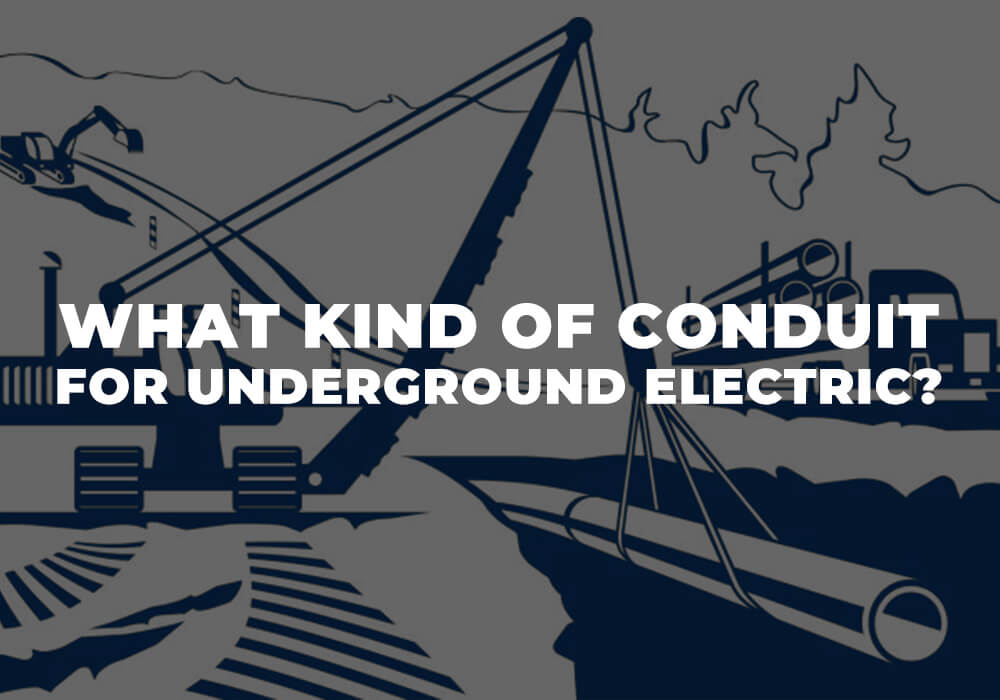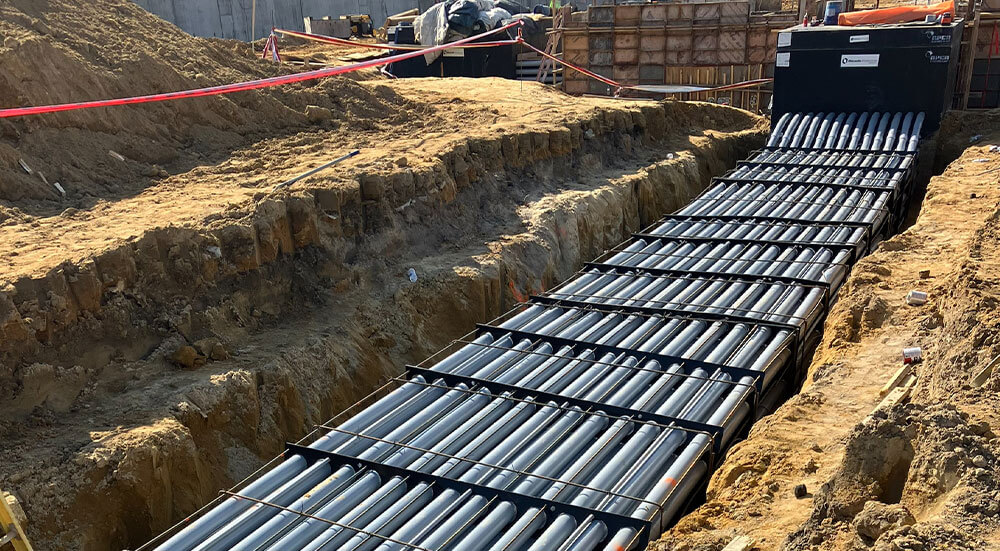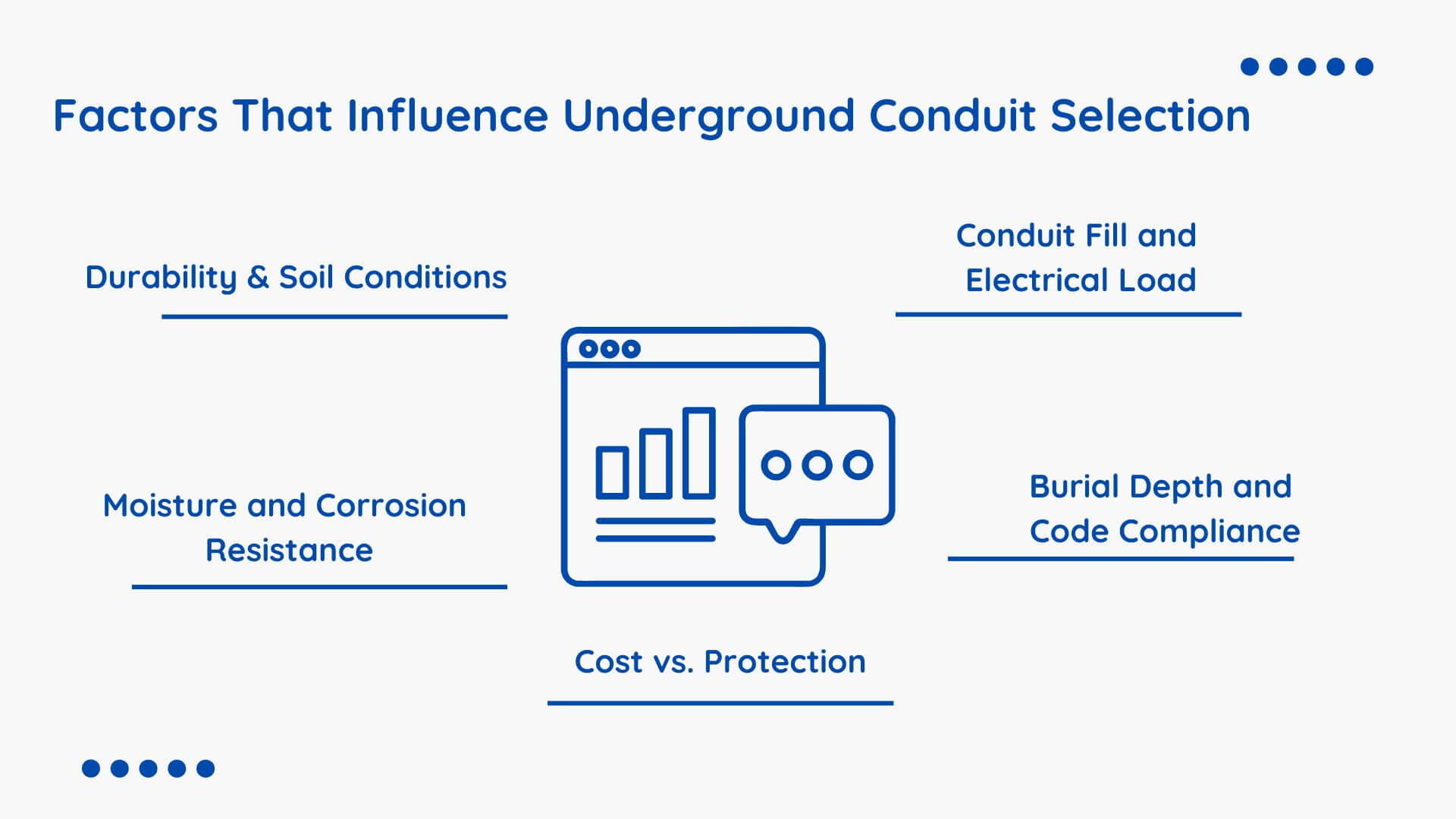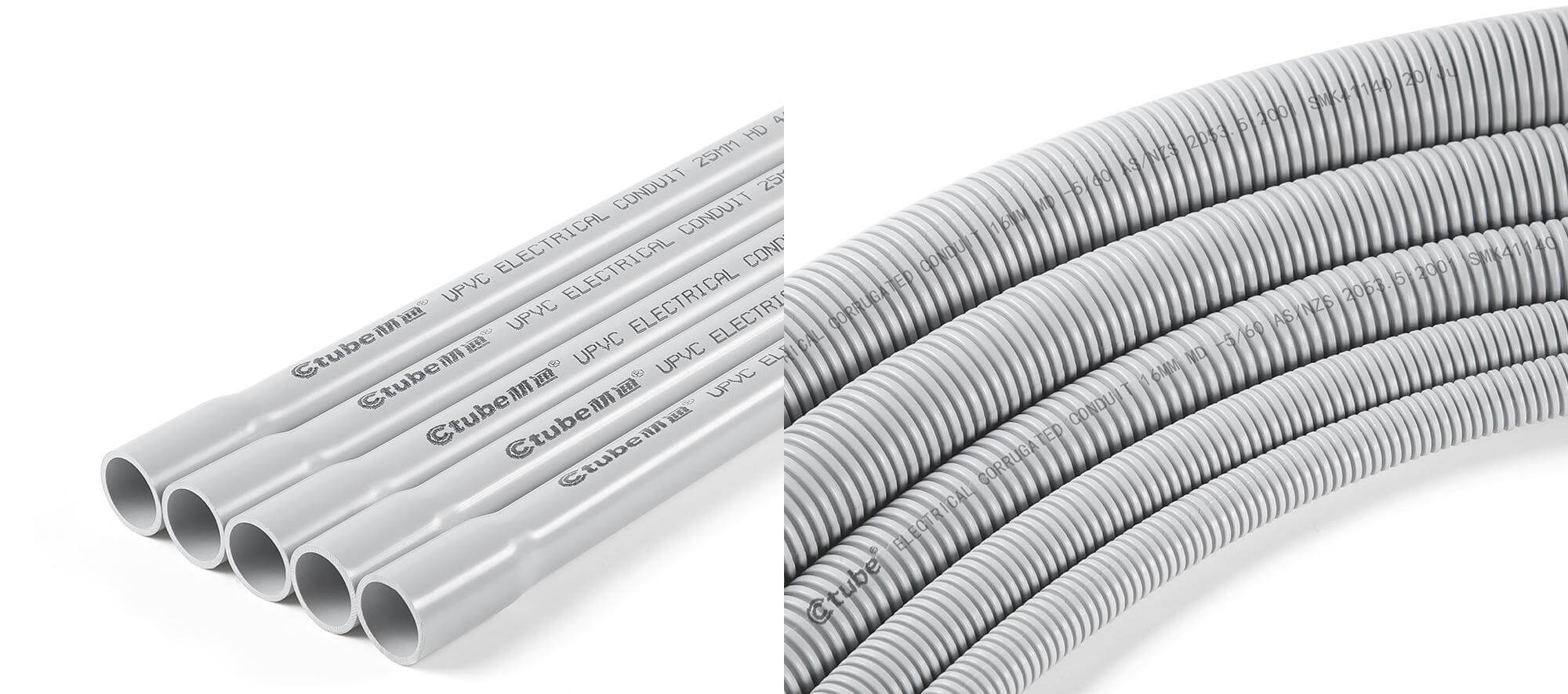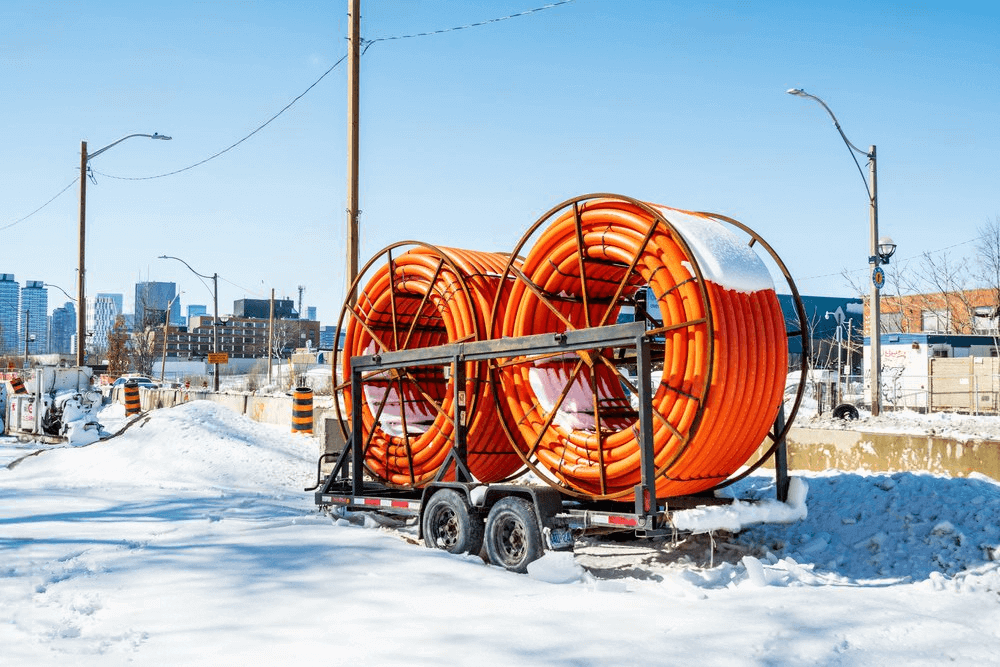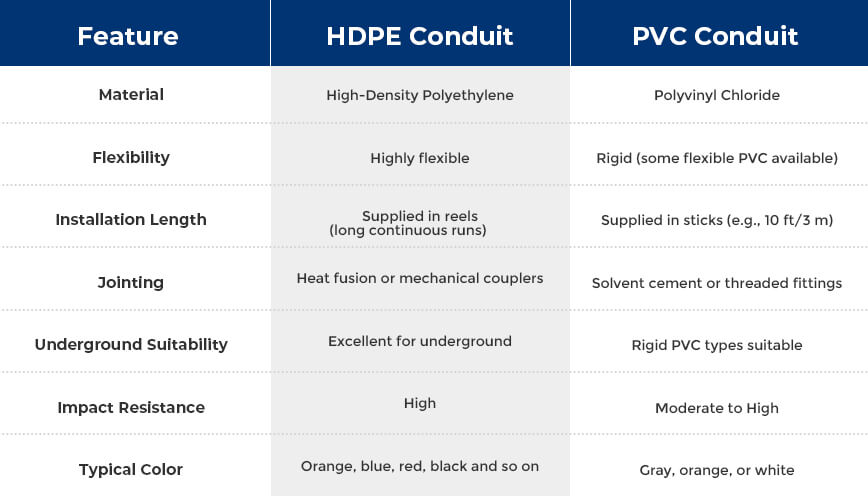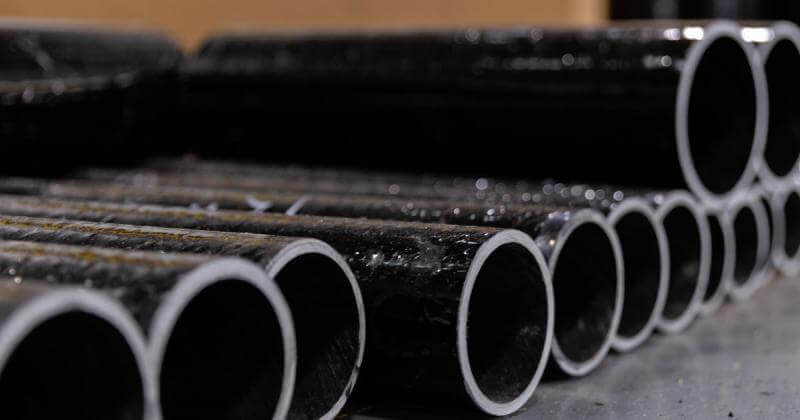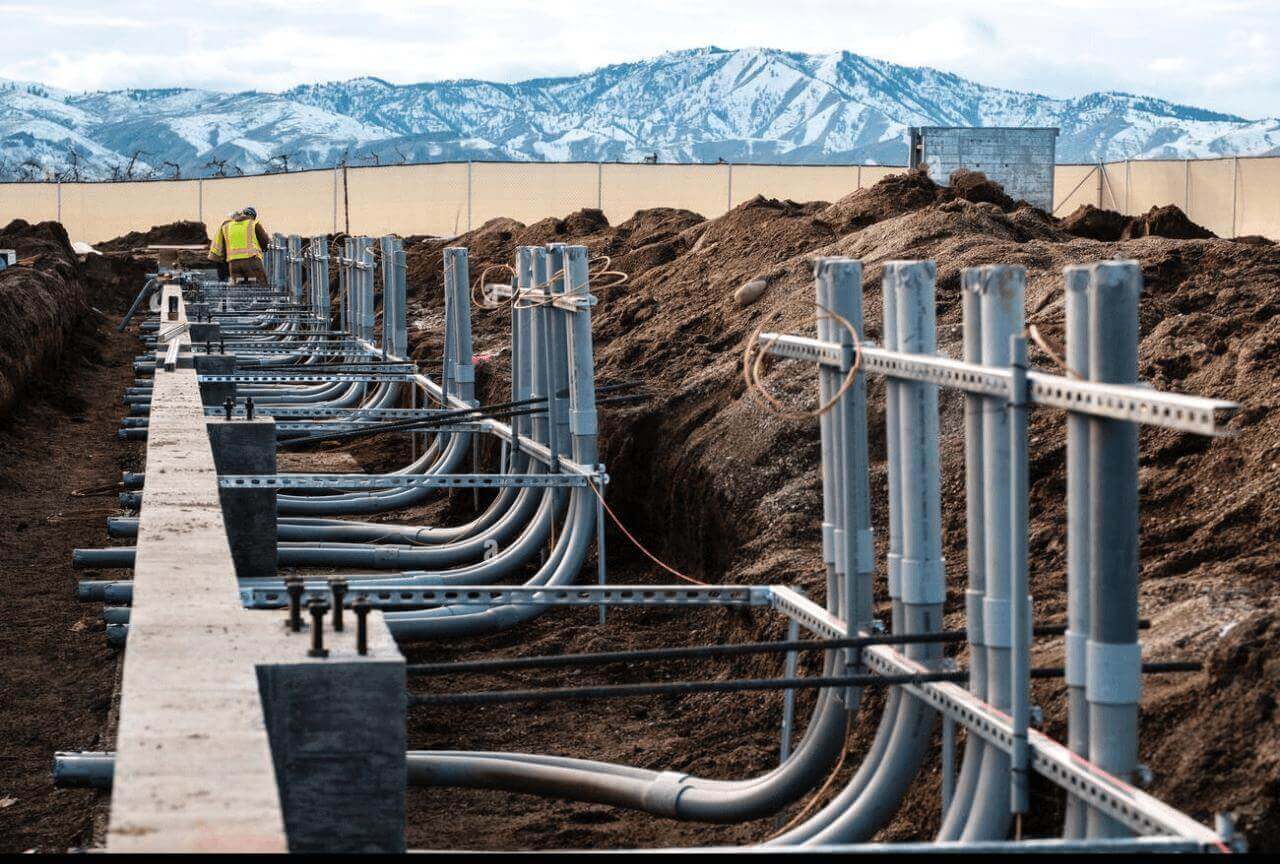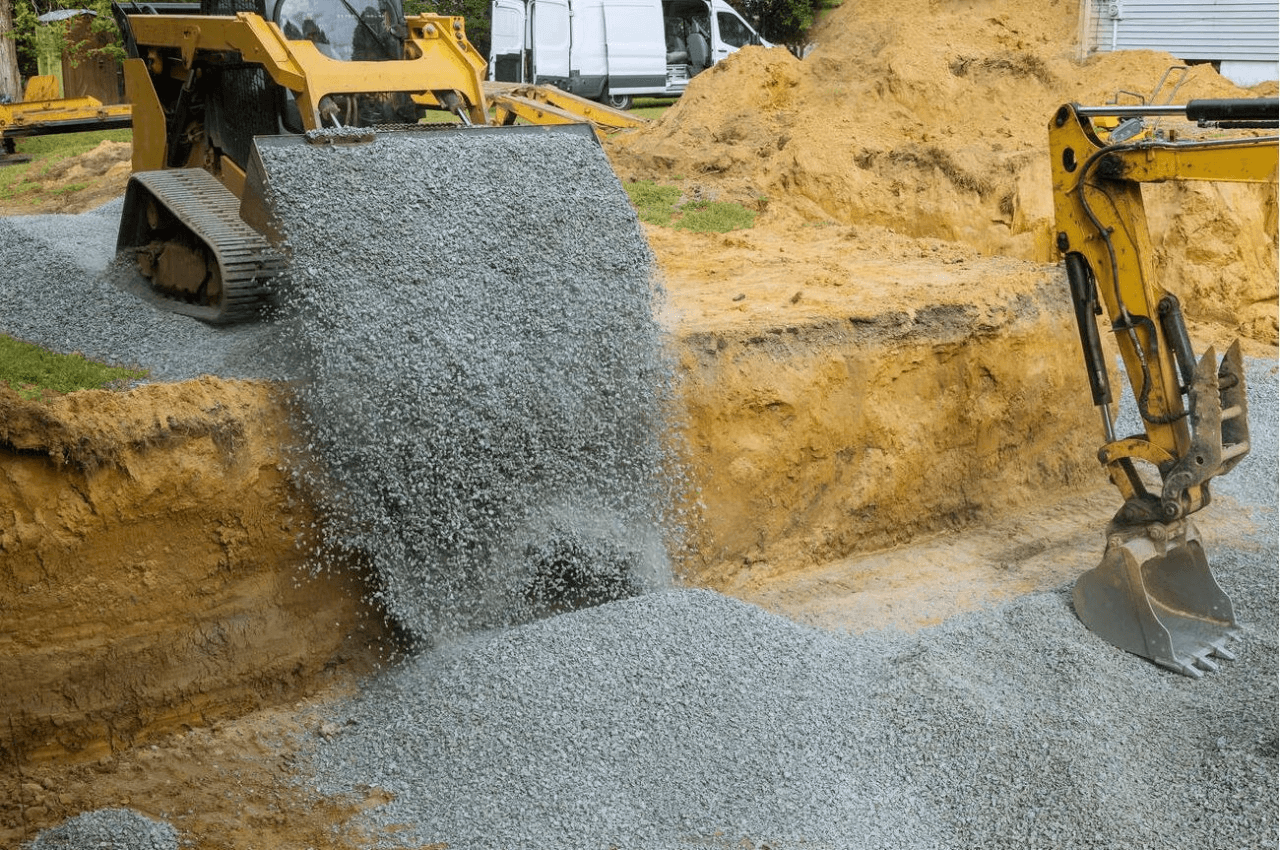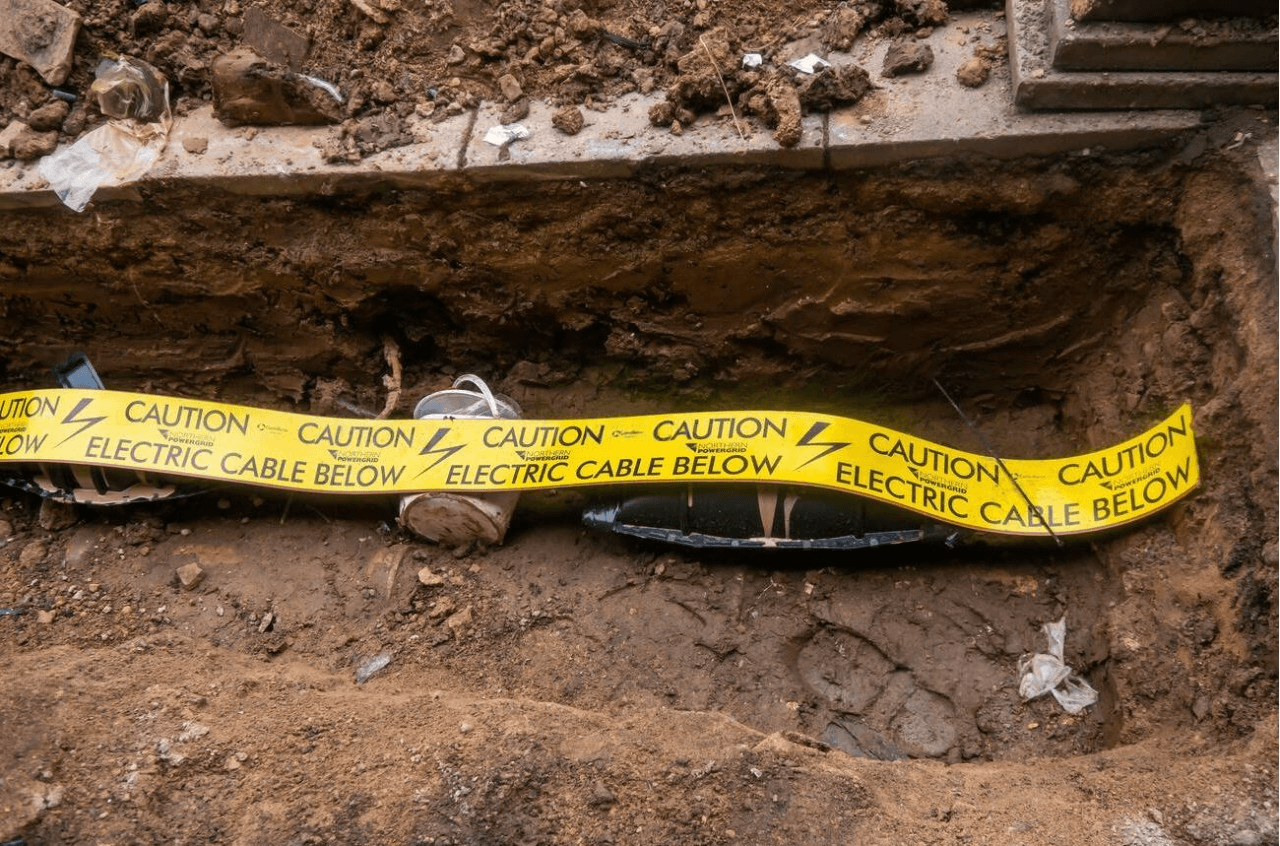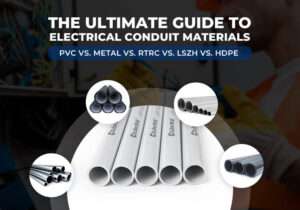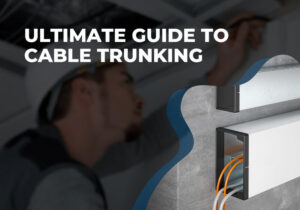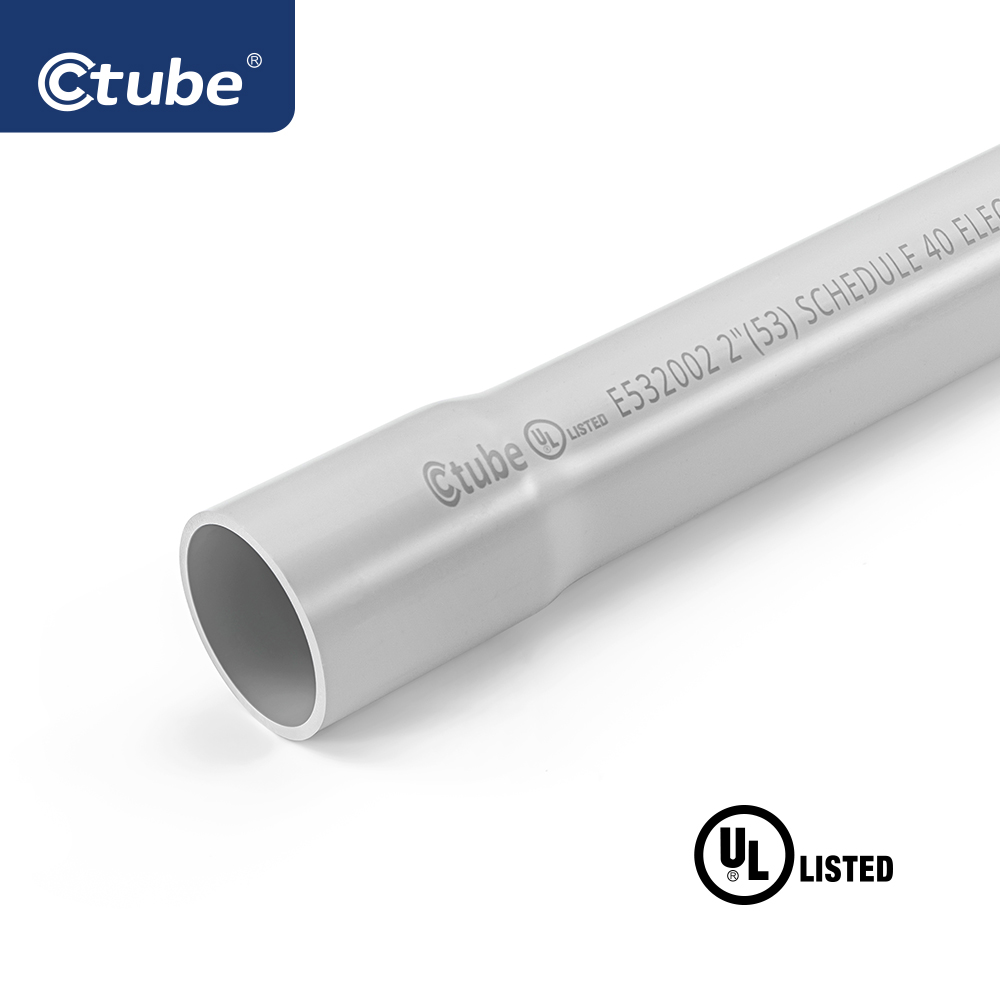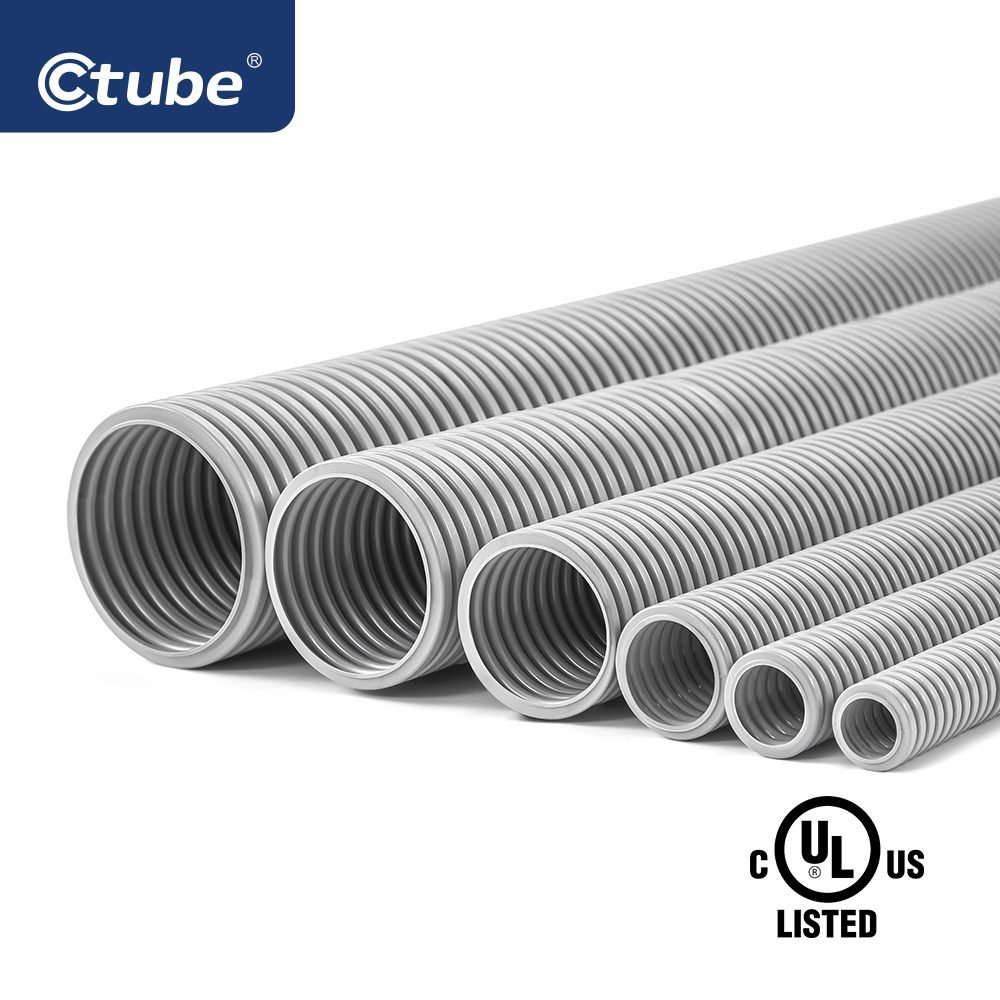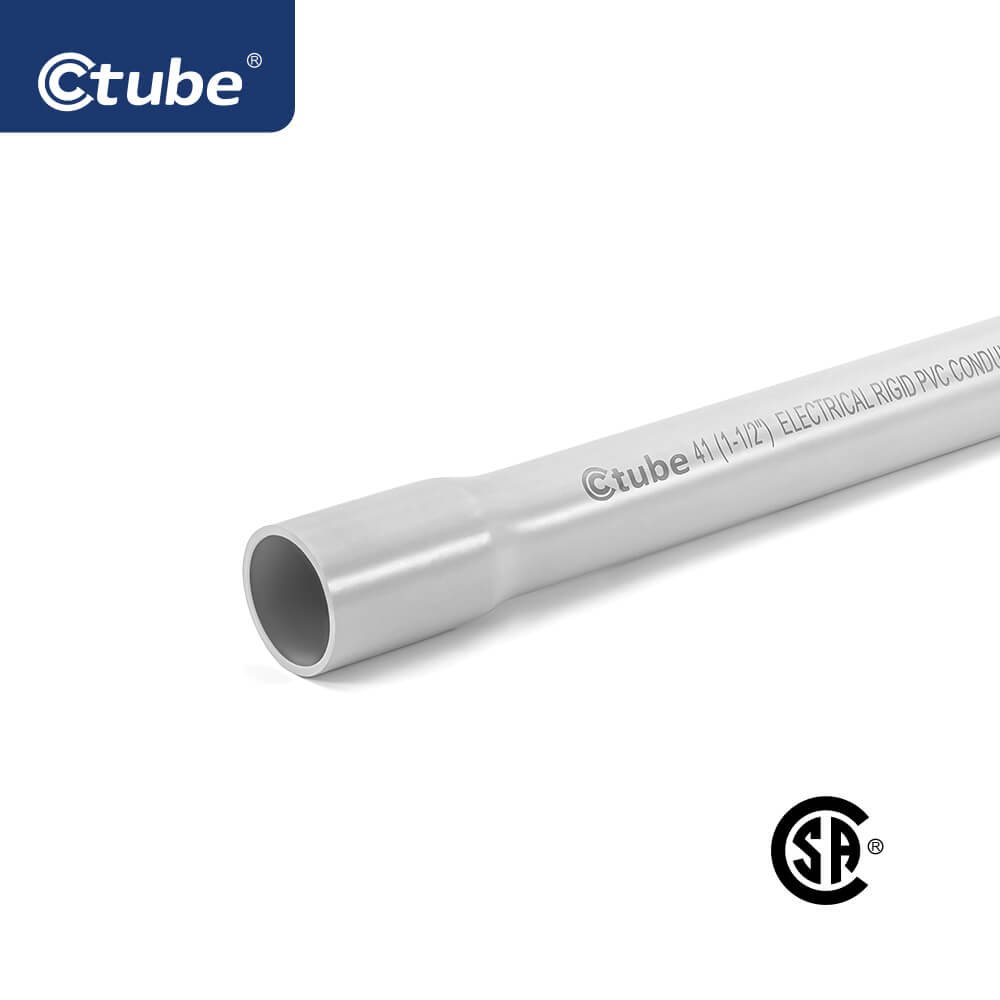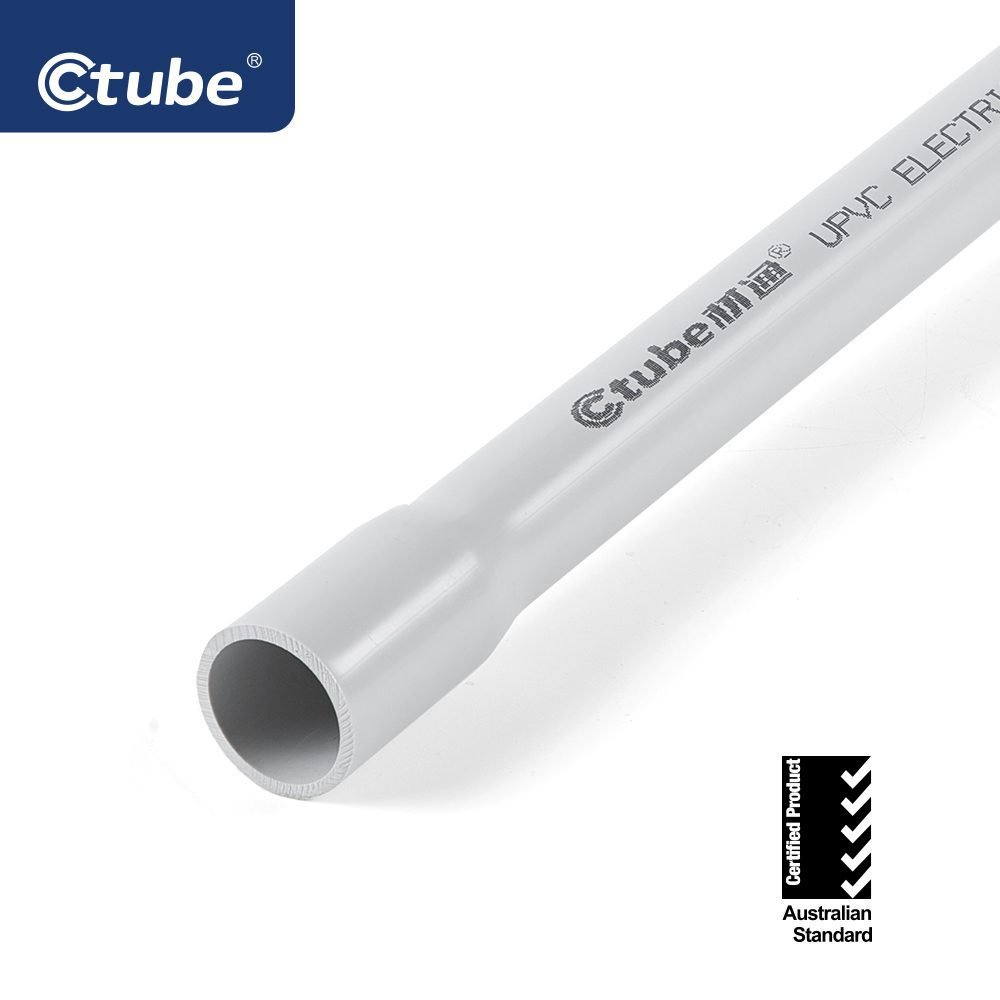Table des matières
Basculer1. Introduction to UG Conduit
When it comes to installing underground electrical wiring, safety and durability are critical. Underground cables face challenges such as moisture, soil pressure, corrosion, and accidental impact.
To protect these cables, electricians use electrical conduit—also known as underground conduit, electrical piping, or electric pipes—to create a secure path that shields wires from damage and helps meet code requirements.
While some projects use direct burial wire or direct burial cable, which are designed to be laid directly in the soil without extra protection, many installations benefit from or require the use of underground electrical conduit. Choosing the right type of conduit ensures your system is long-lasting, compliant, and cost-effective.
In this guide, we’ll explore the most common types of conduit used for underground electrical installations, including PVC conduit, HDPE conduit, RTRC conduit, rigid metal conduit, and more.
We’ll also cover key factors to consider, from soil conditions to code compliance, and provide tips for choosing the right electrical conduit system for your needs.
Whether you’re a homeowner, electrician, or contractor, this article will help you make informed decisions for underground wiring projects.
2. Key Considerations for Running Underground Electrical Conduit
Underground electrical installations demand careful planning and material selection to meet NEC underground conduit depth codes, prevent damage, and ensure long-term system performance.
Whether you’re using conduit tubes, electrical ducts, or setting up a duct bank spacer system, the right approach depends on several critical factors.
2.1 Understanding the Use of Conduit for Underground Electric Lines
While certain cables are rated for direct burial without conduit, using underground electrical conduit adds an extra layer of mechanical protection—especially where cables rise out of the ground, cross driveways, or enter junction boxes.
In many regions, NEC or CEC mandates conduit when the wire emerges above grade or runs through areas prone to physical damage.
Moreover, electrical underground conduit is often required to meet minimum burial depth requirements, usually 18 to 24 inches depending on local code and whether concrete encasement or other mechanical protection is applied.
2.2 Factors That Influence Underground Conduit Selection
Durability & Soil Conditions: Rigid conduits like RMC or Schedule 80 PVC are ideal in rocky soil or areas with high traffic. Softer soils may allow for PVC Schedule 40, HDPE, or RTRC options.
Moisture and Corrosion Resistance: Materials like PVC and HDPE are inherently waterproof and corrosion-resistant, making them ideal for wet conditions.
Conduit Fill and Electrical Load: Ensure conduit has enough space (according to NEC fill tables) to prevent overheating and maintain proper ampacity. For larger systems, consider using electrical duct structures or duct banks with spacers.
Burial Depth and Code Compliance: Reference the NEC underground conduit depth table to determine required trench depth. Using spacers in a duct bank system can simplify installation and alignment when running multiple conduit tubes.
Cost vs. Protection: While direct burial cable offers savings in materials, conduit offers superior long-term safety and flexibility—especially when future expansion or maintenance is considered.
3. Common Types of Conduit for Electrical Wire Underground
Selecting the right underground electrical conduit is crucial for ensuring safety, longevity, and code compliance.
Here we provide a detailed overview of the most common conduit options used in underground electric line installations in the following.
3.1 Polyvinyl Chloride Conduit Underground
PVC conduit is one of the most popular and cost-effective choices for protecting underground electrical wiring. It’s widely used in residential, commercial, and light industrial projects due to its durability, resistance to corrosion, and ease of installation.
But not all PVC conduits are the same — understanding the types available is essential for making the right decision.
Types of PVC Conduit: Rigid vs Flexible
PVC conduits generally come in two main types: PVC rigid conduit and flexible conduit.
Rigid electrical conduit has a straight, solid-wall construction that can withstand external pressure from soil or concrete. It’s also compatible with solvent-welded fittings, making it easy to seal and protect cables from moisture or dirt.
PVC Flex conduit also called Electrical Nonmetallic Tubing or PVC Corrugated Conduit), it’s flexible and bendable, which makes it easy to work with in tight or curved spaces.
However, flexible conduit is generally not recommended for underground use — and in many regions, it is not permitted for direct burial. It lacks the mechanical strength and moisture protection required for underground conditions.
Always check your local electrical code before considering flexible conduit underground.
Underground-Grade PVC Conduit Types in Different Regions
In the United States, underground PVC conduit typically falls into these categories, they are usually used as grey PVC pipe for electric.
Type EB (Encased Burial): Designed for use in concrete encasement. Lightweight with thin walls, but strong enough for protected underground runs.
Type DB (Direct Burial): Slightly thicker than EB, made for direct burial in soil without extra protection. Offers better strength against backfill and pressure.
Schedule 40 PVC: A general-purpose rigid conduit that can be used for direct burial when approved by local code. Often used in combination with Schedule 80 at transition points.
Schedule 80 PVC: Thicker walls than Schedule 40, offering higher mechanical strength. Commonly used where conduits are exposed to potential damage, such as where the pipe exits the ground.
💡 Important Note: We make a detailed comparison in this post Key Differences in Electrical Conduits Types: SCH40 vs SCH80 vs DB60 vs DB100 vs DB120 vs Type A vs Type EB, if you want to know more.
In Australia and New Zealand, PVC rigid conduit is classified by duty rating:
Medium Duty (MD): This type is typically gray PVC conduit in color and is widely used for general electrical and communication applications. Its lighter wall thickness makes it easy to handle and cost-effective for less demanding conditions.
Heavy Duty (HD): It is typically orange in color for easy identification and meets higher strength and used for underground conduit.
About the comparison between Heavy duty and Medium Duty Conduit, here we provide a video if you are interested in.
📌 In both Australia and New Zealand, heavy duty rigid conduit is the standard choice for underground installations — especially where cables may be exposed to pressure, movement, or digging.
3.2 HDPE Conduit for Underground Electric Cable
High-Density Polyethylene conduit, also known as HDPE electrical pipe, is a type of flexible plastic conduit widely used for underground cable protection, especially in fiber optic installations.
This type of conduit is often referred to as fiber conduit orange because it commonly comes in bright orange color to signal that it contains fiber optic cables.
It flexibility makes it ideal for directional drilling, trenchless installations, and areas with curves or elevation changes.
HDPE conduit usually comes in long reels or coils, which reduces the number of joints and speeds up installation. These conduit reels can hold hundreds or even thousands of feet of pipe, perfect for large-scale underground projects.
HDPE conduit comes in two common outer designs:
Smooth wall: Has a clean, uniform surface on the outside and inside. It offers low friction, making it easy to pull cables through. It’s commonly used for fiber optics, power lines, and data systems.
Corrugated wall: Has a ribbed or wavy outer surface and is more flexible than smooth wall conduit. It’s usually used in tight spaces or for shorter, curved runs.
Although it may look similar to PVC conduit at first glance, it’s actually quite different.
💡 Even though both are plastic, HDPE and PVC conduits are made from different materials with distinct properties.
3.3 RTRC (Reinforced Thermosetting Resin Conduit)
Just like PVC and HDPE conduit, RTRC is also a non-metallic solution for protecting underground wiring.
However, it comes with its own unique properties and advantages. RTRC, which stands for Reinforced Thermosetting Resin Conduit, is commonly known as fiberglass conduit.
It is a rigid conduit that combines high strength with low weight, making it especially useful in utility projects where both durability and easier handling are important.
Rigid RTRC conduit is made from fiberglass materials reinforced with thermosetting resin, offering excellent resistance to corrosion, moisture, chemicals, and extreme temperatures. These features make it ideal for demanding environments such as utility conduit systems, power generation plants, wastewater treatment facilities, and coastal or corrosive industrial areas.
Compared with metallic conduit, fiberglass electrical conduit does not rust, making it a longer-lasting option for underground installations. It’s also lighter than steel or rigid metal conduit, which helps reduce labor costs during transportation and installation.
You can find RTRC conduit in various diameters and lengths. It’s usually used with specially designed fiberglass conduit elbows, fiberglass conduit fittings, and FRE pipe systems to route wiring through complex underground paths or structural transitions.
3.4 Metal Conduit for Electric Underground
Metal conduit is a trusted solution for protecting electrical wiring in demanding environments. Just like PVC, metal conduits come in two main types: rigid and flexible.
Now we introduce the rigid conduit first.
Conduit métallique rigide (RMC), also known as Galvanized Rigid Conduit (GRC) or RGS conduit, is one of the strongest and most durable types of conduit available. It’s made of galvanized steel or aluminum electrical pipe, offering excellent resistance to physical impact.
Conduit métallique intermédiaire (IMC) is a thinner and lighter version of RMC, but still strong enough for many underground applications. It’s made of steel and coated for corrosion protection, making it suitable for installations where reduced weight and easier handling are beneficial—without sacrificing too much durability.
Electrical Metallic Tubing (EMT conduit), often referred to as “thin-wall conduit,” is made from lightweight galvanized steel or aluminum. While EMT is easy to install and ideal for indoor or above-ground work, it is not recommended for underground use due to its thin walls. In most regions, burying EMT directly in soil is either prohibited or requires extra protection like encasement in concrete.
While rigid metal conduit like RMC and IMC are widely approved for underground work, Flexible Metal Conduit (FMC) and Liquidtight Flexible Metal Conduit (LFMC) are generally not suitable for burial. These flexible conduits are designed for indoor use, or in specific damp or vibrating environments—not for long-term underground exposure unless explicitly rated and protected.
💡 Important Note: We make a detailed introduction about rigid conduit in this post Electrical Rigid Conduit Comparison: PVC Conduit vs Metal Conduit (EMT, RMC, IMC), if you want to know more.
4. How to Run Underground Electrical Conduit?
Installing underground electrical conduit properly is essential for protecting your wiring and ensuring long-term performance.
The process involves planning, selecting the right conduit type, following code-compliant burial depths, and executing the installation carefully.
While the general steps are similar, different types of conduits—like rigid PVC, HDPE, and rigid metal conduit (RMC)—have some specific requirements.
Step 1: Plan the Layout and Choose the Right Conduit Type
Start by mapping out the route of the underground wiring. Consider the total length, bends, and depth. Then choose a conduit based on your project needs.
Always check your local electrical code to ensure the chosen conduit type is approved for underground use in your region.
Step 2: Dig the Trench According to Code
The depth of your trench depends on the conduit type and the location. For example:
PVC or HDPE conduit typically needs 18 inches (450 mm) of cover.
RMC may require 6 inches (150 mm) minimum, but more is common.
Areas with vehicle traffic may require 24 inches (600 mm) or more.
Always refer to NEC Table 300.5 or your local standards for exact depth requirements.
Step 3: Lay the Conduit and Make Connections
For rigid PVC: Cut to length, dry-fit first, and then use PVC solvent cement for permanent connections.
For HDPE conduit: Use fusion welding, mechanical couplings, or pre-connected reels.
For metal conduit: Use threaded fittings or compression connectors for sealed joints. Corrosion protection (like wrapping tape or applying sealant) may be needed.
Minimize sharp bends and use elbows where necessary to prevent wire pulling issues.
Step 4: Pull the Wire
Once the conduit is in place and all connections are secure:
Use a fish tape or pulling line to feed the wire through.
Avoid sharp turns or excessive force to prevent damage.
For long runs or multiple bends, pull boxes may be required.
Step 5: Backfill and Compact
Before backfilling:
Inspect the conduit system for damage or gaps.
If needed, place a warning tape above the conduit to alert future diggers.
Use clean fill (free of rocks or debris) around the conduit, then compact the soil gradually in layers.
5. Conclusion: Choosing the Right Underground Electrical Conduit
When it comes to underground electrical installations, choosing the right conduit isn’t just about following code—it’s about protecting your system for the long haul.
From rigid PVC and HDPE to reinforced fiberglass and rigid metal conduit, each material offers its own strengths and ideal applications.
Whether you need flexibility for long-distance pulls or durability for high-traffic areas, understanding the differences between conduit types helps you make smarter, safer choices.
We hava introduced a detailed about choosing between the different types of conduit and material in this post, PVC vs. Metal vs. RTRC vs. LSZH vs. HDPE, The Ultimate Guide to Electrical Conduit Materials (2025), if you are interested in.
À Ctube, we specialize in providing a wide range of underground conduit solutions, including rigid PVC conduit, flexible conduit, and custom-sized options that meet international standards like UL, ASTM, and AS/NZS.
Whether you’re planning a residential, commercial, or infrastructure project, Ctube is here to support your success with durable products, technical knowledge, and responsive service.
Thanks for tour reading. Hope this post helpful. Wishing you the best of luck with your project!
FAQ
Q1: What kind of conduit for underground electric?
For underground electrical wiring, common types of conduit include PVC rigid conduit, metal rigid conduit (RMC), reinforced thermosetting resin conduit (RTRC), and high-density polyethylene conduit (HDPE).
Q2: What kind of electrical wire can be buried underground?
For underground electrical wiring, you can use UF-B cable, THWN-2 wire, XHHW-2 wire, or USE-2 wire. These wires are designed to handle moisture, heat, and harsh underground conditions, with UF-B being suitable for direct burial without conduit.
Q3: Rigid Conduit vs. Flexible Conduit for Underground Use?
For underground installations, rigid conduit is often preferred because it provides better protection against physical damage and environmental factors.
Flexible conduit is usually not recommended for underground use, unless it’s a specialized HDPE conduit (high-density polyethylene).

